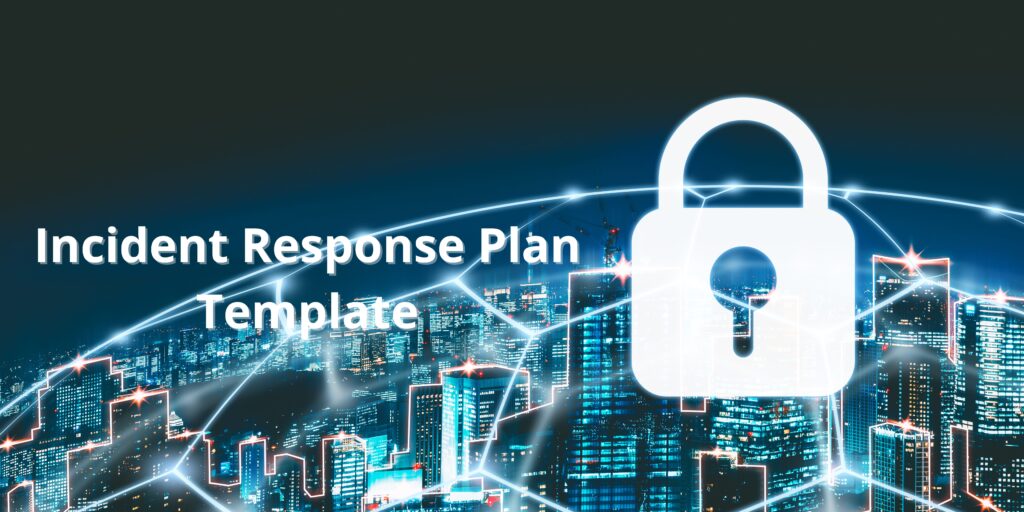Comprehensive Guide to Effective Incident Response Plan Template for 2024

In today’s digitally-driven world, the importance of a robust Incident Response Plan (IRP) cannot be overstated. As we step into 2024, the landscape of cyber threats continues to evolve, becoming more sophisticated and perilous. The key to safeguarding an organization’s digital assets and reputation hinges on its ability to respond swiftly and effectively to these cyber incidents.
Download FREE Incident Response Plan Template here.
Table of Contents
Introduction
The critical importance of having a well-defined Incident Response Plan Template(IRP Template) for organizations in the contemporary digital landscape. In an era where security threats are both pervasive and continually evolving, the IRP serves as a vital framework for preparing and responding to potential security incidents.
Importance of an Incident Response Plan (IRP)
This subsection delves into why having an IRP is critical for organizations in the digital age. It highlights the increasing prevalence of cyber threats and the potential consequences of data breaches, malware attacks, and other security incidents. The importance of the IRP lies in its ability to provide a structured, organized response, mitigating damages, reducing recovery time, and maintaining business continuity. This part of the blog will emphasize how an effective IRP is a technical necessity and a strategic asset that safeguards reputation, customer trust, and legal compliance.
You can also read – Malware vs Viruses: A Comprehensive Comparison 2023
Key Principles of Incident Response Plan Template

This subsection outlines the foundational principles essential for effective incident response readiness. It covers aspects such as:
- Proactive Planning: Establishing clear procedures and guidelines before an incident occurs.
- Regular Training and Awareness: Ensuring that all staff members, not just the IT team, are trained on the IRP and understand their roles in the event of an incident.
- Testing and Drills: Regularly testing the IRP through drills and simulations to identify gaps and areas for improvement.
- Continuous Improvement: Updating the IRP regularly based on evolving threats, new technologies, and lessons learned from past incidents.
- Cross-Functional Collaboration: Highlighting the importance of involving various departments (like IT, legal, HR, and PR) in the IRP to address all facets of an incident.
- Compliance and Alignment with Business Goals: Ensuring the IRP aligns with legal requirements, industry standards, and the organization’s overall business objectives.
Establishing a Framework for Incident Management
This subsection focuses on the critical process of developing a comprehensive framework for incident management. It involves creating a robust policy that dictates how an organization prepares for, detects, responds to, and recovers from security incidents. Key elements include:
- Policy Objectives: Defining the goals and objectives of the incident response policy, such as protecting sensitive data, ensuring compliance with legal regulations, and minimizing the impact of security incidents on business operations.
- Scope of the Policy: Outlining the scope to clarify which types of incidents are covered under the policy and identifying the assets, resources, and data that need protection.
- Roles and Responsibilities: Detailing the roles and responsibilities of various stakeholders, including the Incident Response Team (IRT), IT staff, management, and external partners.
- Response Procedures: Establishing clear procedures for incident detection, reporting, assessment, containment, eradication, and recovery.
- Communication Plan: Develop a communication plan for internal stakeholders and external parties, such as customers, partners, and regulatory bodies.
- Compliance and Legal Considerations: Ensuring that the policy aligns with legal, regulatory, and industry standards relevant to the organization’s operations.
Policy Scope and Application
This subsection expands on the applicability of the incident response policy across the organization. It will address how the policy applies to different departments, personnel levels, and types of incidents. Key aspects include:
- Inclusive Application: Ensuring the policy applies to all departments and levels within the organization, including third-party vendors and contractors.
- Integration with Other Policies: Describing how the incident response policy interfaces with other organizational policies, such as data protection policies, IT security policies, and business continuity plans.
- Adaptability and Flexibility: Highlighting the need for the policy to be adaptable to various types of incidents, ranging from minor security breaches to major cyber attacks.
- Regular Updates and Review: Discuss the importance of periodically reviewing and updating the policy to adapt to new threats, technological advancements, and changes in the organizational structure or business strategy.
Steps for Initial Incident Handling
This subsection is dedicated to outlining the immediate actions to be taken when a privacy or security incident is suspected or confirmed. The focus is on rapid assessment and containment to prevent further damage. Key steps include:
- Incident Identification and Confirmation: Procedures for identifying and confirming the occurrence of a security incident. This might involve detecting unusual network activity, breaches in data security, or receiving alerts from security systems.
- Assembling the Incident Response Team (IRT): Mobilizing the IRT promptly, which includes members from IT, security, legal, and communications departments, among others.
- Initial Assessment and Documentation: Gathering initial information about the incident, such as the type of incident, systems affected, potential data compromised, and initial impact assessment. Proper documentation from the outset is crucial for later analysis and reporting.
- Containment Strategies: Implementing immediate containment measures to prevent the spread or escalation of the incident. This could involve isolating affected systems, disabling network access, or other emergency responses.
- Communication Protocols: Establishing initial communication channels among the IRT, and with other relevant internal and external stakeholders, while maintaining confidentiality and integrity.
You can also read – Why Cyber Security Awareness Training is Important Post Covid Era?
Data Security and Escalation Protocols
This subsection delves into the procedures for securing critical data and assets immediately following an incident and the criteria for escalating the incident within or outside the organization. Important aspects include:
- Securing Data and Assets: Steps to protect sensitive information and critical systems from further compromise. This might involve backing up data, applying patches, changing passwords, or implementing additional security measures.
- Determining the Scope and Impact: Evaluating the breadth and severity of the incident to understand its full impact. This involves identifying the data and systems affected, the extent of unauthorized access or data loss, and potential business implications.
- Decision-Making on Escalation: Criteria for deciding when and how to escalate the incident within the organization, such as notifying top management, or externally, like informing law enforcement or regulatory bodies. This decision is based on factors like the severity of the incident, legal requirements, and potential reputational risks.
- Legal and Compliance Considerations: Understanding and following legal and regulatory obligations related to the incident, such as breach notification laws and industry-specific compliance requirements.
Conclusion
The establishment and maintenance of an Incident Response Plan are imperative in the modern digital landscape. Organizations must adopt a proactive stance towards cybersecurity threats, ensuring preparedness through comprehensive planning, regular training, and adherence to legal and compliance standards. An effective incident response plan template is not just a response mechanism, it’s a strategic asset that enhances an organization’s resilience, reputation, and trustworthiness in the digital realm.
Why is an Incident Response Plan Template critical for organizations?
An Incident Response Plan Template is crucial for promptly and effectively addressing security incidents, minimizing damage, and maintaining business continuity in the face of cyber threats.
What are the key principles of an effective Incident Response Plan Template?
Key principles of Incident Response Plan Template include proactive planning, regular training and awareness, testing and drills, continuous improvement, cross-functional collaboration, and compliance alignment.
How does an Incident Response Plan Template align with an organization’s overall objectives?
An Incident Response Plan Template aligns with an organization’s objectives by ensuring business continuity, protecting reputation and customer trust, and complying with legal and regulatory standards.






